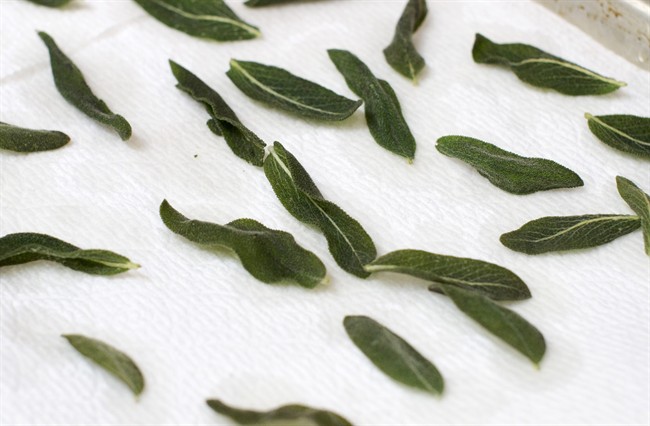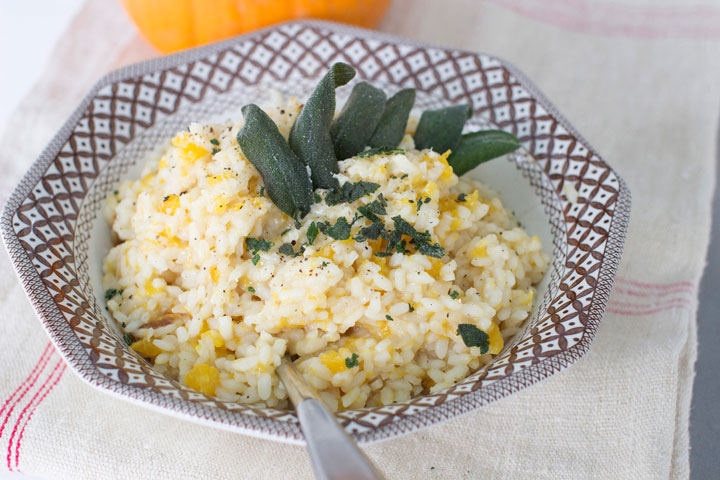If you’ve never made risotto before, you’re missing out on a great candidate for a weeknight meal. With no more at hand than the right rice, an onion, some broth and a wedge of Parmesan, you have dinner.

Like omelets or tortillas, risotto is attractive as a weeknight dinner because of its flexibility; you can augment it with anything, your choice of veggies and/or proteins, leftovers definitely included. And, yes, I know that the Italians think of risotto as a first course, like soup or pasta. But in this country there aren’t many working folks preparing multi-course meals during the week.
Let’s start with the basic risotto technique. For a family of four to six, you’ll need about 1 1/2 to 2 cups of the correct rice, half a chopped onion, 6 cups of broth, and about a cup of cheese.
There are three proper rice choices – carnaroli, vialone nano and arborio, with arborio being the easiest to find. All three are much starchier than the long-grain rice we usually cook with, which means they produce a wonderful creamy sauce when cooked properly.
In the standard prep method, you start by sauteeing the onion in a bit of fat (butter or olive oil or both) until softened. You then add the rice and “toast” it, that is, coat it thoroughly with the fat. Next, the liquid is added – no more than 1/2 cup at a time – and brought to a simmer. And stirred. And stirred. And stirred… until most of the liquid has been absorbed and you can see the bottom of the pan when you stir.
Then you do it again. And again. Again. The point of this method is to coax as much starch out of the rice as possible. The whole process takes about 20 plus minutes of constant stirring. All that non-stop stirring is what makes some people shy away from making risotto. It’s just too much doggone work.
Happily, if heretically, there’s a less labour-intensive way to get the job done. It’s a method I was taught by Andrew Carmellini, a wonderful New York chef and restaurateur with an Italian background. He adds the broth just twice, half in the beginning and the remaining half after the first batch has been absorbed, which cuts way down on the stirring. Try it yourself and see if it the resulting risotto isn’t satisfyingly creamy.

Get breaking National news
After you’ve added the broth, when the grains of rice are just al dente, it’s time to put in the cheese, and perhaps an extra dab of butter. It’s also at this point that I sometimes pour in a little additional broth, which makes the risotto saucier. You can add the cooked veggies or protein at the beginning or end of this process.
I cast pumpkin as the star of this dish because this is the season for it. But I’m not talking about Charlie Brown’s great pumpkins; I’m working with the mini guys. Most folks think these cute little squashes are just for decoration, but they happen to be super tasty. I roasted them, cut side down, until they were very tender, then discarded the seeds – a chore that’s much easier to do after the pumpkins are cooked. Finally, I scooped out and mashed the pulp and stirred it into the risotto. If you can’t find the tiny pumpkins, you can substitute 1 1/2 to 2 cups of mashed roasted butternut squash.
—
PUMPKIN RISOTTO WITH FRIED SAGE
Start to finish: 45 minutes
Servings: 6
- Vegetable oil
- About 2 pounds small pumpkins, halved top to bottom
- 36 fresh sage leaves (from 1 small bunch)
- Salt
- 2 tablespoons unsalted butter
- 1/2 cup finely chopped yellow onion
- 6 cups chicken or vegetable broth
- 2 cups Arborio rice
- 1/2 cup dry white wine
- 1 cup finely grated Parmesan cheese, plus extra to serve
- Ground black pepper
Heat the oven to 350 F.
Lightly coat a rimmed baking sheet with vegetable oil. Arrange the pumpkins, cut side down, on the baking sheet. Bake on the oven’s middle shelf for 45 to 60 minutes, or until a knife can pierce the flesh with ease. Using tongs, turn the pumpkin halves to face cut side up, then let cool until they are easily handled. Scoop out and discard the seeds. Scoop out the pulp into a bowl and mash it with a potato masher. Set aside.
In a 4-quart saucepan, heat 1-inch of vegetable oil to 360 F. Add about 6 sage leaves (don’t crowd the pan) and fry them for 10 to 15 seconds. Use a slotted spoon to transfer them to a paper towel, then immediately sprinkle them with salt. Repeat with remaining sage. Set aside.

Discard the oil from the saucepan, then return it to medium heat. Add the butter and onion, then cook, stirring occasionally, until the onion is softened, about 5 minutes.
Meanwhile, in a medium saucepan, bring the chicken broth to a bare simmer.
Add the rice to the softened onions and cook, stirring, until well coated. Add the wine, bring to a simmer and cook until most of the wine is absorbed. Add half of the warm broth, return to a simmer and cook, stirring occasionally, until most of the broth has been absorbed, about 9 to 10 minutes.
Add the remaining broth and cook, stirring occasionally, until most of the broth has been absorbed, about another 9 to 10 minutes. Stir in the cheese and pumpkin puree. Taste, then season with salt and pepper. Cook until just heated through. Divide between 6 serving plates, then top each with additional cheese and the fried sage leaves.
Nutrition information per serving: 400 calories; 90 calories from fat (23 per cent of total calories); 11 g fat (5 g saturated; 0 g trans fats); 20 mg cholesterol; 61 g carbohydrate; 4 g fiber; 3 g sugar; 13 g protein; 1290 mg sodium.







Comments